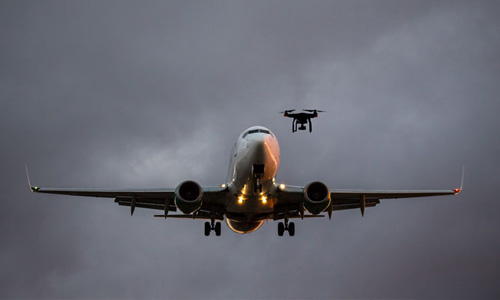


Drone detection pilot program at Ottawa airport produces results

InDro Robotics, Rogers make first drone / RPAS flight in Canada using 5G network
InDro Robotics has flown two drone missions utilizing a Rogers 5G network – another important Canadian first. The flights took place at the University of British Columbia (UBC) in April, 2021.
This milestone demonstrated potential future applications of 5G-enabled autonomous flights in Canada and around the world.
The two UAVs, both manufactured and operated by InDro Robotics, were standard quad models integrated with a 5G transmitter/receiver. The RPAS units used the Rogers 5G network at UBC to perform various tasks during test flights.
InDro flies drone missions over Rogers 5G network
The 5G network was installed by Rogers as part of a three-year, multimillion dollar partnership with UBC. The goal is to build a real-world 5G hub on campus that will be the blueprint for 5G innovation and research in Canada.
Drones generally communicate using standard radio frequencies. These have limited range and data bandwidth. Flying drones over the Rogers 5G network, InDro Robotics can share videos and even dense data with multiple users anywhere on the network at a much faster rate.
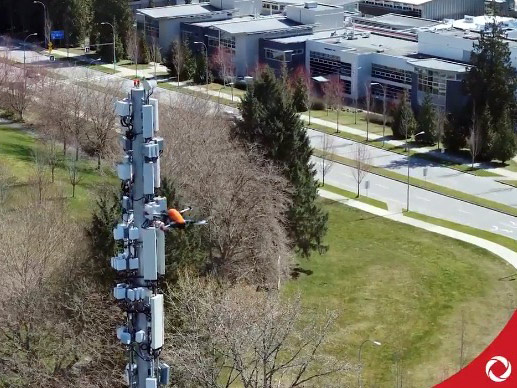
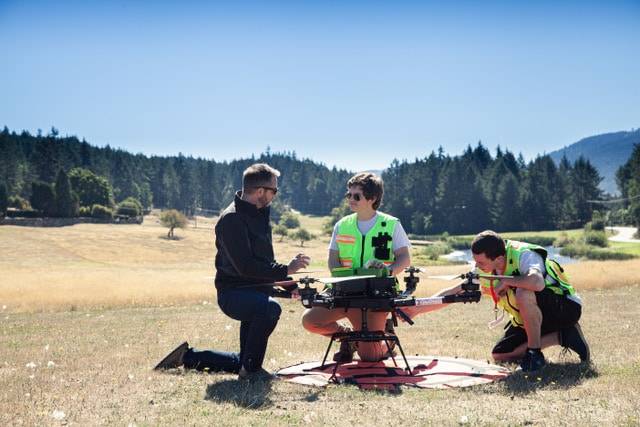
The InDro Robotics mission flying drones over 5G networks
The drone flights, carried out by InDro Robotics over a Rogers 5G network, were highly successful. The drones completed tasks such as picking up and dropping off a box containing first-aid medical supplies from one location to another.
InDro Robotics President and CEO, Philip Reece, said the ability to fly utilizing a 5G network opens up more opportunities for new uses for UAV technology, such as deployment during natural disasters and critical incidents. The use of 5G allows sharing data with multiple users. More importantly, it enables the operation of UAVs from off-site command centres that could be hundreds or thousands of kilometres away from the mission.
“Two greatly anticipated technologies that have developed over the past years are commercial drones and 5G networks. On their own each have an amazing impact on many industries. Together, they do so much more. We now have drones flying over public and private 5G networks that can collect and send data into the cloud for AI processing and back to offsite command centres with near-zero latency. This enables drones to operate smarter and safer, sharing critical data with those that need it instantly. This helps keep First Responders out of harm’s way, and allows engineers to inspect infrastructure faster and more efficiently. It also helps keep airspace safe, and so much more,” said Reece.
“We are proud to be leading the industry in deploying drones over cellular networks in North America.”

InDro Robotics proud to announce partnership with leading robot chassis manufacturer AgileX Robotics
InDro Robotics has partnered with best-in-class robot manufactures, AgileX Robotics.
Founded in 2016, AgileX Robotics is a leading robot chassis manufacturer and mobile robot system solution provider in China. AgileX Robotics has developed mobile robot chassis products such as unmanned ground vehicles (UGV), indoor small autonomous guided vehicles (AGV) and modified wire-controlled electric robots. These devices can serve in security and industrial inspections, agricultural irrigation, logistics and transportation, detection and exploration, scientific research and education.
InDro Robotics, AgileX partner on ground robots
Together, InDro Robotics and AgileX are developing and distributing these UGVs in North America.
This partnership is a momentous step for InDro Robotics, as AgileX’s platform is a perfect fit for robotics research. This opens the door to further applications, including integrated sky and ground robotics, indoor/outdoor data acquisition, mapping, path planning, and teleoperation.
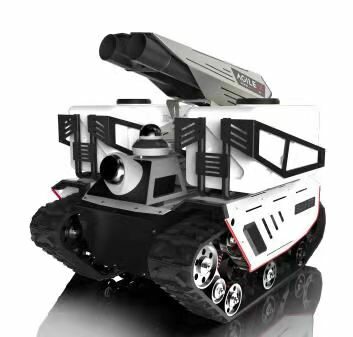
AgileX ground robots a perfect match for InDro Robotics
“The technology that we have been developing with clients on the drone side has provided us with breakthroughs and industry firsts, many of these clients also have environments that a robust ground robot would be well suited for, be it tele-operated, automated or working in unison with the drone. As such we called upon an established partner of ours — AgileX Robotics — to provide us with a reliable base to build upon, allowing us to rapidly add our technology to theirs and bring to market new solutions,” said Philip Reece, President and CEO of InDro Robotics.
Currently, both companies are continuing to work on advancing Robot Operation Systems (ROS) and creating solutions to simplify the development of complex robot behavior throughout a vase range of robotic platforms.

InDro Robotics, AgileX offer SCOUT MINI R&D platform
One of these platforms is the R&D KIT, a fully integrated solution for robotics research and development with AgileX Robotics’ SCOUT MINI platform. The R&D Kit includes with a full suite of sensors to support indoor SLAM, navigation and vision based applications, as well as a powerful NVIDIA Jetson Nano computer comes pre-installed with Linux and ROS ubuntu 18.4.
The SCOUT MINI R&D kit accelerates robotics applications and research by eliminating the need to design, manufacture and integrate a complex robotic system.
The Ranger Mini is another highly successful platform developed by AgileX Robotics. The Ranger Mini is a new Omni-directional UGV that is based on the new four-wheel and four-turn control theory. The product adopts an independent drive module design with integrated drive and steering. It includes a number of flexible driving modes and combing powerful maneuverability and flexibility that will bring more possibilities for mobile robot platforms for different applications.
“The Ranger Mini is a very new and special technique that we use for mobile robots, and you can never find this type of product in other parts of the world. Through working on this with InDro Robotics, I believe that we can easily see these products in the North American markets,” said Brand Xue, Lead of Global Sales & Marketing at AgileX Robotics.
“InDro Robotics is the bridge that can bring our latest and best technology mobile robots into the North American market.”
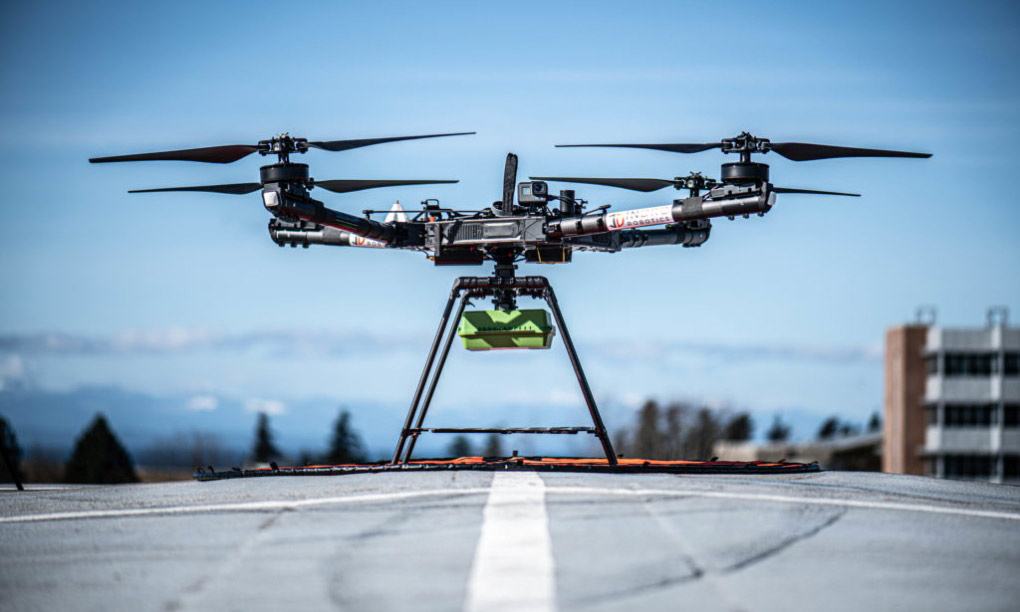
InDro Robotics delivers COVID-19 tests by drone in B.C.
Throughout 2020, healthcare providers of Penelakut Island in British Columbia, Canada, were challenged with a very difficult situation.
Due to the COVID-19 pandemic, a single ferry boat was accessible between the island and the nearest medical lab located in Chemainus on Vancouver Island, putting the timely transport of samples at risk.
The process of getting the supplies to the lab took hours to complete, and one of the island’s three nurses had to travel with the supplies, making them unavailable to provide health services during the day.
InDro Robotics was tasked by the Island to begin deploying a Unmanned Aerial Vehicles (UAVs), or drone, to expedite the transportation of COVID-19 tests,
To start evaluating this problem, the team at InDro Robotics worked alongside Penelakut Island’s residents in strategizing a plan to fly samples using specialized drones and navigation software. Penelakut Island is currently home to over 1,000 people from the Penelakut First Nations community.
While InDro Robotics had the technology to fly between both islands, connection latency became a key issue during the trials.
Often drones are equipped with satellite connectivity solutions to accommodate the real-time video streaming needed to enable Beyond Visual Line of Sight (BVLOS) operation of UAVs (Unmanned Aerial Vehicles). However, according to Philip Reece, President and CEO of InDro Robotics, satellite is hindered by as much as 7 seconds of latency, which is way too much to provide safe operations for BVLOS.
Transport Canada also requires companies to use technology features that track signal
strength during a UAV’s journey. This meant that any solution chosen by InDro Robotics would need to support such features while integrating their proprietary flight navigation software.
As a solution for the constant high-performance connectivity needed for its drones, InDro Robotics deployed Cradlepoint’s NetCloud Service for Mobile, with the Advanced Plan, and wireless edge routers built for in-vehicle use. NetCloud’s cellular signal monitoring and thermal mapping features would allow InDro Robotics to optimize performance and safety during the drones’ route.
Using Cradlepoint’s NetCloud API, InDro Robotics was able to pull GPS-based cellular health information into the company’s flight navigation systems.
These endpoints also leveraged LTE service, provided by Rogers, instead of satellite connectivity, which carries too much latency for the real-time video streaming necessary on these flights.
The cloud-managed cellular connectivity would ensure that the low-latency video streaming can be essential to successful drone flights, and the map-based performance analytics can still be necessary to optimize flight patterns while meeting Canadian drone regulations.
“Using an enterprise-grade router on our drones allows us to stream video well from two on-board cameras along with full command and control, which is essential as we continue to expand our UAV products and services,” said Reece.
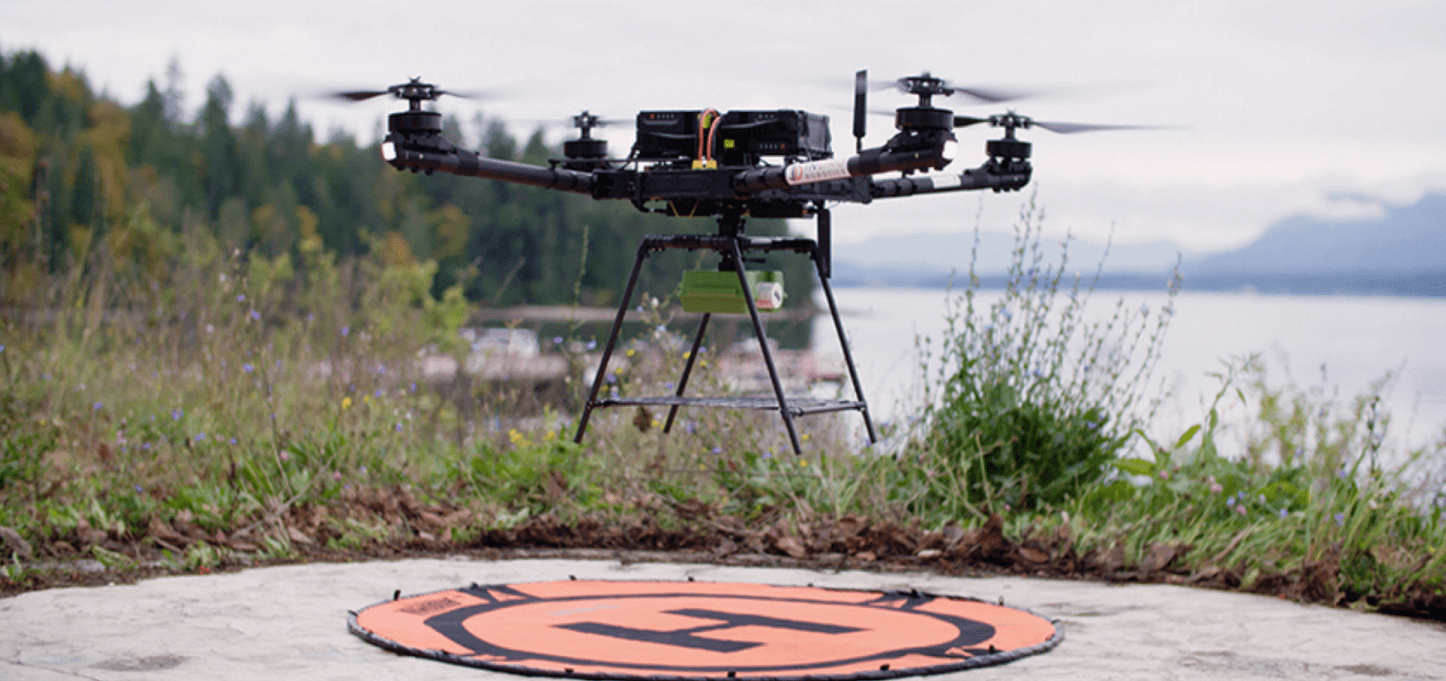
InDro Robotics also used NetCloud’s GeoView suite of location-based features forregulatory requirements. This was used to save time and money during the project, as InDro Robotics was able to track cellular health analytics and identify “dead zones” on a heat map during several test flights in various weather conditions on various routes. This lead to evidence-based decisions about the best possible flight paths to and from the island for its UAVs.
Fortunately for residents of Penelakut Island, these LTE enabled drones can mean medical supplies and COVID-19 tests will be swiftly transported in a shorter time-frame. This also meant that local medical professionals could offer more time to serve their patients on the island.
END NOTES
InDro Robotics is a leader in drones, or Unmanned Aerial Vehicles (UAVs), as well as the first North American company to develop beyond visual line of site (BVLOS) technology with regulatory approval for emergency and first responder missions. InDro Robotics has accumulated thousands of flight hours and has collaborated with leading agencies such as Transport Canada, Canadian Space Agency, and NASA.
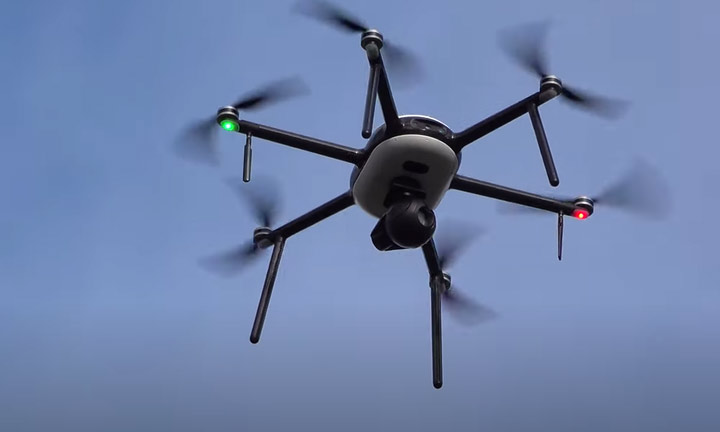
InDro Robotics inspects transmission power lines on private LTE network with NYPA and Nokia
In partnership with Nokia and the New York Power Authority (NYPA), InDro Robotics ran a highly successful demonstration with Unmanned Aerial Vehicles (UAV), or drones, that were installed with private LTE wireless technology.
The first-of-its-kind, InDro Robotics’ drone inspection with NYPA – one of the United States’ largest state public power organizations – exhibited the ability to control onboard high definition and thermal imaging devices during inspections within close proximity of in-service transmission lines.
InDro Robotics’ was chosen for this project due to their extensive expertise in operating UAV’s in unprecedented ways when NYPA was scouting out drones for transmission line inspection.
These test flights were also aimed at assisting the NYPA, and possibly other corporations, to safely inspect miles of transmission lines using wireless networks to convey images and data.
Within the visual line of sight and fully compliant with FAA rules and regulations, the drone flights took place in December 2020 at NYPA’s Blenheim-Gilboa Pumped Storage Power Project in Schoharie County, New York.
The test flights were part of the NYPA pilot program, which began when the NYPA partnered with Nokia of America Corporation to pilot private wireless LTE technology. Using Nokia’s Digital Automation Cloud platform, NYPA is hoping to build a secure and reliable network that would enhance operational and programmatic benefits. Once this network is finalized, NYPA expects to petition the Federal Aviation Administration for permission to fly drones beyond visual line of sight (BVLOS) to make their inspections of transmission lines easier.
In using the LTE wireless network system for inspections, NYPA is looking to adopt the network in other areas. This includes workforce mobility applications (voice-over LTE), 30x optimal zoom camera, deep metering services and data of customer energy consumption, Wi-Fi telephony and Push-to-Talk (PTT) applications, as well as data transport that would support NYPA energy efficiency initiatives.
